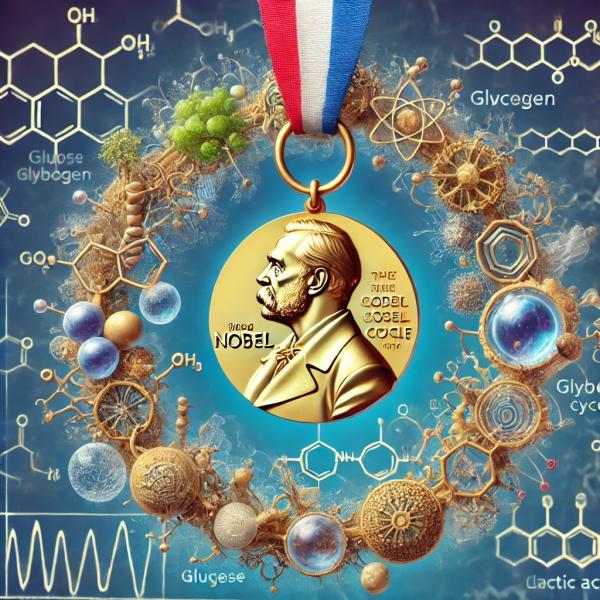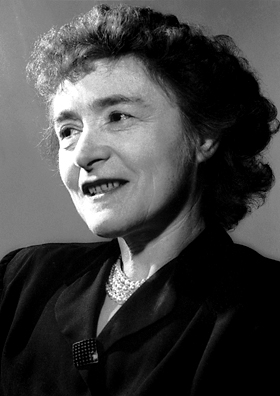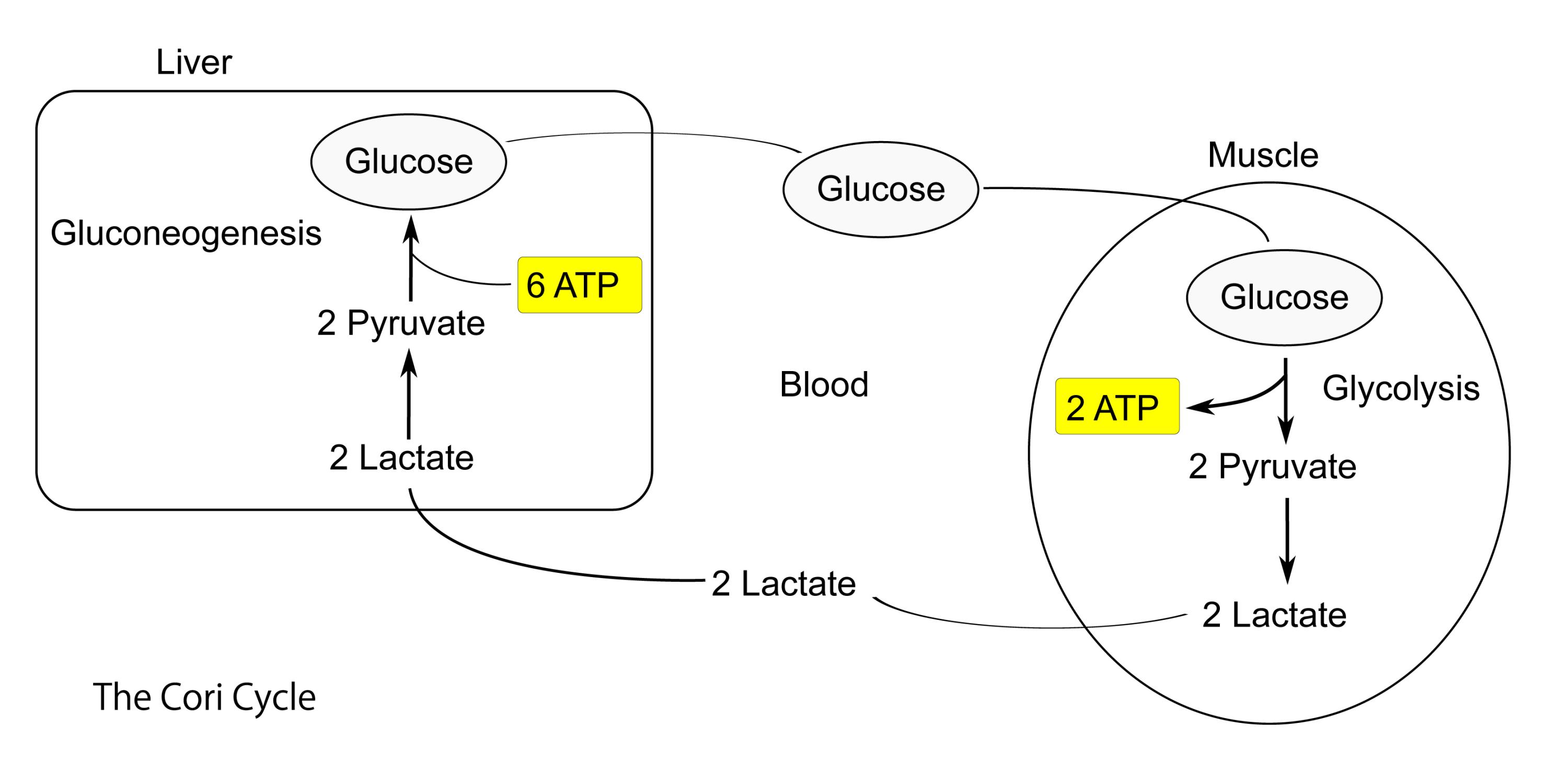
Even as Marie Curie and her husband Pierre and their daughter Irène and her husband Frederic Joliot-Curie were awarded joint Nobel Prizes, Gerty and Carl Cori were discouraged from working together. Maybe it was something about the different cultures in which they worked – the Curies were in Europe; the Cories were in America. Told in no uncertain terms that it was “un-American for a husband and wife to work together,” this did not stop them and for over 30 years they collaborated, sharing the Nobel prize in medicine in 1947.
“Our collaboration began 30 years ago when we were still medical students at the University of Prague and has continued ever since. Our efforts have been largely complementary, and one with the other would not have gone as far as in combination."
– Gerty Cori
 Born in Prague in 1896, Gerty entered medical school in 1914 (after cramming eight years of Latin, five of science, and two of math into one) where she met Carl. Drawn by her exuberance, sense of humor, and love of the outdoors (their personalities were said to be diametrically different, she, an emotional extrovert, he, a cerebral introvert), they married in 1920. The war and Gerty’s Jewishness (she later converted) took its toll, and they emigrated to the US in 1922 where they began their joint, but initially obstructed, collaboration at Roswell Park. The director threatened to dismiss Gerty if she did not cease collaborative research with her husband, to no avail.
Born in Prague in 1896, Gerty entered medical school in 1914 (after cramming eight years of Latin, five of science, and two of math into one) where she met Carl. Drawn by her exuberance, sense of humor, and love of the outdoors (their personalities were said to be diametrically different, she, an emotional extrovert, he, a cerebral introvert), they married in 1920. The war and Gerty’s Jewishness (she later converted) took its toll, and they emigrated to the US in 1922 where they began their joint, but initially obstructed, collaboration at Roswell Park. The director threatened to dismiss Gerty if she did not cease collaborative research with her husband, to no avail.
Like other women of science, Gerty suffered discrimination throughout her early career, offered lower stature and salary compared to her husband whose qualifications were identical. They left Roswell Park in 1931 (after publishing their work on carbohydrate metabolism) and arrived at Washington University (where they would stay until Gerty’s untimely death in 1957) and where Gerty was offered a research assistant professorship at a salary one tenth of Carl’s. But that was better than the offer Carl got at Buffalo University which outright refused to allow collaboration. At Washington University, the Chancellor made an allowance for Gerty, ignoring the university's nepotism rules, but Gerty would wait 13 years before she attained the same rank as her husband.
Cori-ester is not a girl’s name
Cori ester is an intermediary in the process of glucose metabolism that produces the energy that enables us to move, to breathe, even to think. Discovering this molecule, along with the process of glucose storage to glycogen, and back into the glucose that produces that energy (the Cori-cycle), was among the pre-eminent discoveries of the Coris.
 Glycogen is the storage form of glucose (a sugar), a member of the carbohydrate class of foods. Made up of thousands of glucose molecules, glycogen is stored primarily in the liver and to some degree in our muscles. (When marathon runners “carb-up” the night before a race those carbohydrates become glycogen, serving as their long-distance fuel reserve.)
Glycogen is the storage form of glucose (a sugar), a member of the carbohydrate class of foods. Made up of thousands of glucose molecules, glycogen is stored primarily in the liver and to some degree in our muscles. (When marathon runners “carb-up” the night before a race those carbohydrates become glycogen, serving as their long-distance fuel reserve.)
Insulin is the hormone that helps the body convert glucose into energy for immediate needs.
Glucagon is the hormone that signals the reverse: telling the liver to convert glycogen to glucose, which is released into the blood stream to provide additional energy. Glucagon plus insulin regulates blood sugar by maintaining glucose in a steady concentration, glucose homeostasis. Glucagon also promotes gluconeogenesis, the conversion of glycogen back to glucose.
Patients with type 2 diabetes secrete not only too little insulin (manufactured in the pancreas) but also too much glucagon, which contributes to poor blood glucose control.
It was at Washington University that Gerty and Carl discovered enzymes involved in glucose metabolism and deduced that the Cori ester provides the first step in the reversible conversion of glycogen into glucose (breaking down the energy stores into a form that can be used and back again to glycogen).
A Deeper Dive into the Cori Cycle
Orchestration of glucose metabolism involves the blood, liver, muscles, various metabolites, and enzymes (which regulate the rate of chemical reactions without themselves being altered in the process). Breaking down glycogen is facilitated by an enzyme, also discovered by the Coris, called phosphorylase, which mediates efficient removal of the waste of glucose breakdown , in this case lactic acid.
Feel the Burn
Think back to the last time you over-exercised – or conjure the mantra “feel the burn”. This refers to muscle fatigue, and what you are experiencing is the buildup of lactic acid, the breakdown product of the muscle’s glucose metabolism, i.e., “the burn.” Lactic acid (or lactate) build-up signals an emergency need for more glucose.
Since the body can’t use lactic acid directly, some process must transport lactate away from the muscles and bring more glucose back to them. Enter the Cori Cycle, where the lactic acid is transported from the muscles to the liver by the blood where it is converted to glucose, and the glucose is routed back to the muscles via the blood. Amazing!
In the liver, the lactic acid is transformed by another enzyme, lactate dehydrogenase (LDH), into the magic molecule, pyruvate. This intermediary either transforms the lactic acid into the storage vehicle, glycogen, or transforms it into glucose for immediate use. Testing for LDH is part of routine blood testing; an elevated LDH might signify liver damage. If the process of glucose metabolism is impaired, various diseases, including diabetes, obesity, and metabolic syndrome, may ensue.
Mentoring, Nurturing, and Inspiring
The standards of excellence expected in the Cori’s Washington University lab applied to scientific rigor and precision in experimentation, along with inspired study design, generating six Nobel prize winners. Included in the notable scientists mentored were several women, including Dr. Jane Harting Park a pioneer in molecular physiology and biophysics who studied diabetes and muscular dystrophy and Dr. Barbara I. Brown who studied the biochemistry of inherited metabolic diseases.
The Coris had one son, Tom, a pharmaceutical executive who married the daughter of the arch-anti-Feminist, Phyllis Schlafly, perhaps following his mother’s conservative bent. (Carl was a liberal).
There is no official biography of Gerty Cori and her life is summarized by various organizations with which she was associated. Other than a short essay entitled “This I Believe” written for the National Academy of Sciences in 1954, little is known of her personal philosophy, reproduced in part below:
“Contemplation of the great human achievements through the ages is helpful to me in moments of despair and doubt…Humanity has but a short history of civilized life and the hope for greater wisdom must resign itself to a fairly distant future. Gone are the somewhat utopian hopes of my youth…. Hope remains, but the time scale has widened. ...
The greatest achievements in art and science, I believe, have been made by men, who had faith, or compassion for their fellow men ….
I believe that cynicism and despair are the straitjacket into which totalitarian systems try to force the human mind [and] are inimical to first rate achievements in art and science…
I believe that the excessive will to power … has been, and is still, the cause of great suffering of humanity. Science has given these ruthless men tools of great effectiveness and has vastly increased the domination they can exercise over their fellow men. This has created in some men’s mind the misconception that science itself is evil…
My beliefs have undergone little change during my life…. Honesty, which stands mostly for intellectual integrity, courage and kindness are still the virtues I admire, though with advancing years the emphasis has been slightly shifted and kindness now seems more important to me than in my youth. The love for and dedication to my work seems to me to be the basis for happiness. As a research worker, the unforgotten moments of my life are those rare ones which come after years of plodding work, when the veil over nature’s secret seems suddenly to lift….”
Gerty Cori received numerous awards and honors including election to the National Academy of Sciences. In 1952, President Harry S Truman named her to the National Science Board of the National Science Foundation.
Source: John H. Exton, Crucible of Science, The Story of the Cori Laboratory.




